Biba, Big Biba and Beyond: An Interview with Designer Steve Thomas
As a designer working in London during the transformative decades of the 1960s and 70s, Steve Thomas co-founded Whitmore-Thomas Design Associates in 1968 alongside fellow Chelsea School of Art graduate Tim Whitmore. Having met Barbara Hulanicki, the founder of Biba, during the 1960s, Thomas and Whitmore became the preferred interior and graphic designers for the London fashion and lifestyle brand. Their longstanding creative partnership with Hulanicki culminated in their designs for the iconic ‘Big Biba’ store, a landmark of the 1970s London fashion and design scene.
Ahead of our upcoming Design Auction on 5 August, to which Thomas has consigned a unique prototype desk originally created for the Biba offices, we spoke with him about his design career, working with Barbara Hulanicki, and the stories behind a few of his favourite pieces in the upcoming sale.
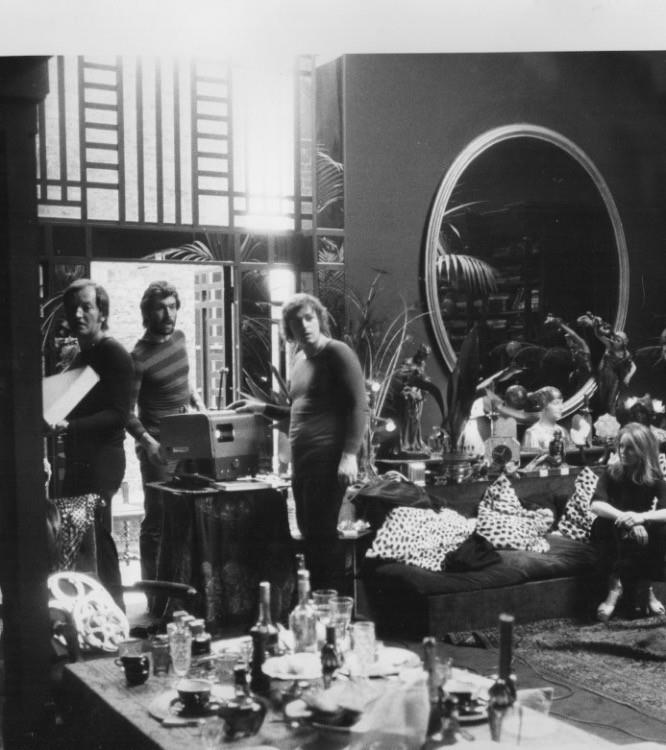
Stephen Fitz-Simon, Tim Whitmore & I with Eleanor looking on, after Sunday lunch at Barbara & Fitz-Simon’s house, that I designed for them in 1971.
Lot 150 in our Design Sale is a prototype desk created for the Biba offices. Could you tell us more about how the piece came about?
ST: "I was originally commissioned in 1974 by Barbara Hulanicki to design a desk to be used in the Biba offices that was to be compact, to stop her team of assistants from creating huge mounds of paperwork and samples on their desktops and thus neaten up their way of working (each desk would have black filing cabinets under). Barbara’s office, which she shared with her six assistants, was a mountainous tip of stuff - but they all seemed to know where it all was. I thought that lots of pigeon-hole wall shelving would help, along with seasonal rigorous clear-outs, which would answer the problem better, but was shot down in flames by the squirrels!
I produced this unique first prototype as a trial. When Barbara saw it, she immediately said "great, but let’s put it into production as a dressing table/desk for home use, too and sell it retail" on the Household Floor of Big Biba. A rare mistake from Barbara. This design with six nickel-plated rods, high gloss black lacquer and vellum drawer fronts proved to be far too expensive for retail. It was not designed to be retailed.
So I produced a second prototype, a cheaper version, the whereabouts of which I’ve no idea. However, as Biba collapsed in late 1975, Barbara resigned, and this project, along with the Biba car, the cinema, and the Venetian Fish ’n’ Chip Shop, was sadly cancelled."
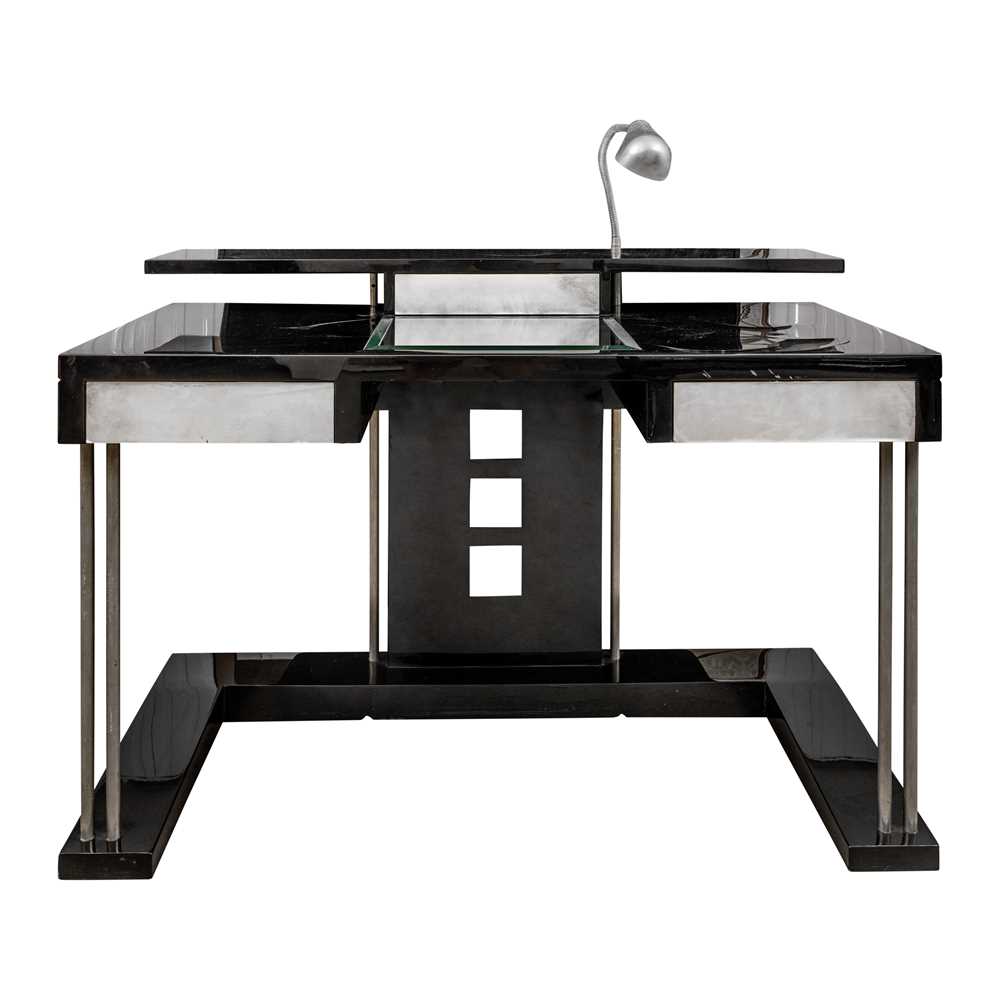
Steven Thomas (British b.1944) of Whitmore-Thomas Associates, for Biba, London
Prototype desk for Biba offices, circa 1974, Estimate £400 - £600
Whitmore-Thomas Associates was behind the graphic and interior design of Big Biba. How did you first get involved, and what were your creative influences?
ST: "Sex reared its ugly head. Actually not true. I was struck by the Sicilian thunderbolt. During my latter days at Chelsea Arts School in 1965, my then-girlfriend, who was a singer, a good one (who went on to great heights), worked at a small boutique in Kensington called Biba as a Saturday girl. That was when I first met Barbara Hulanicki and Stephen Fitz-Simon, as I tried to blag free clothes for her public appearances from them.
My then-girlfriend introduced me to her shop manager, and I instantly fell in love. But it took me some time to win her. She was very popular. However, I succeeded and at a supper party at Barbara & Fitz-Simon’s house in 1968, Barbara asked me if I could design a Children’s Department for their new Kensington High Street store by the next day, as their current interior designer was rather tardy. Of course, I said. Having accepted my design of a ‘village’ of doll houses, she then asked if I could build it, due to a shortage of site labour. So I called my fellow Chelsea studio partner, Tim Whitmore, and together in silly time, we managed to complete the project, we managed to complete the project working 147 hours straight.
We were then the preferred Biba team of interior and graphic designers, going on to design the Biba Cosmetics product range and Cosmetics units worldwide. Mini-Bibas in Bergdorf-Goodman and Bloomingdale’s New York, Fiorucci Milan and Au Printemps Paris followed, before we were offered the entire project of Big Biba (the old Derry & Toms site on Kensington High Street) in Christmas 1971. All seven floors, which we completed in September 1973.
Our design process has always remained the same. Listen to the client’s brief, argue the brief openly with the client, work bloody hard and usually turn in something unexpected but brief-correct, much to the client’s fury or delight. We were always known for being renegades, but always, I hope, interesting"
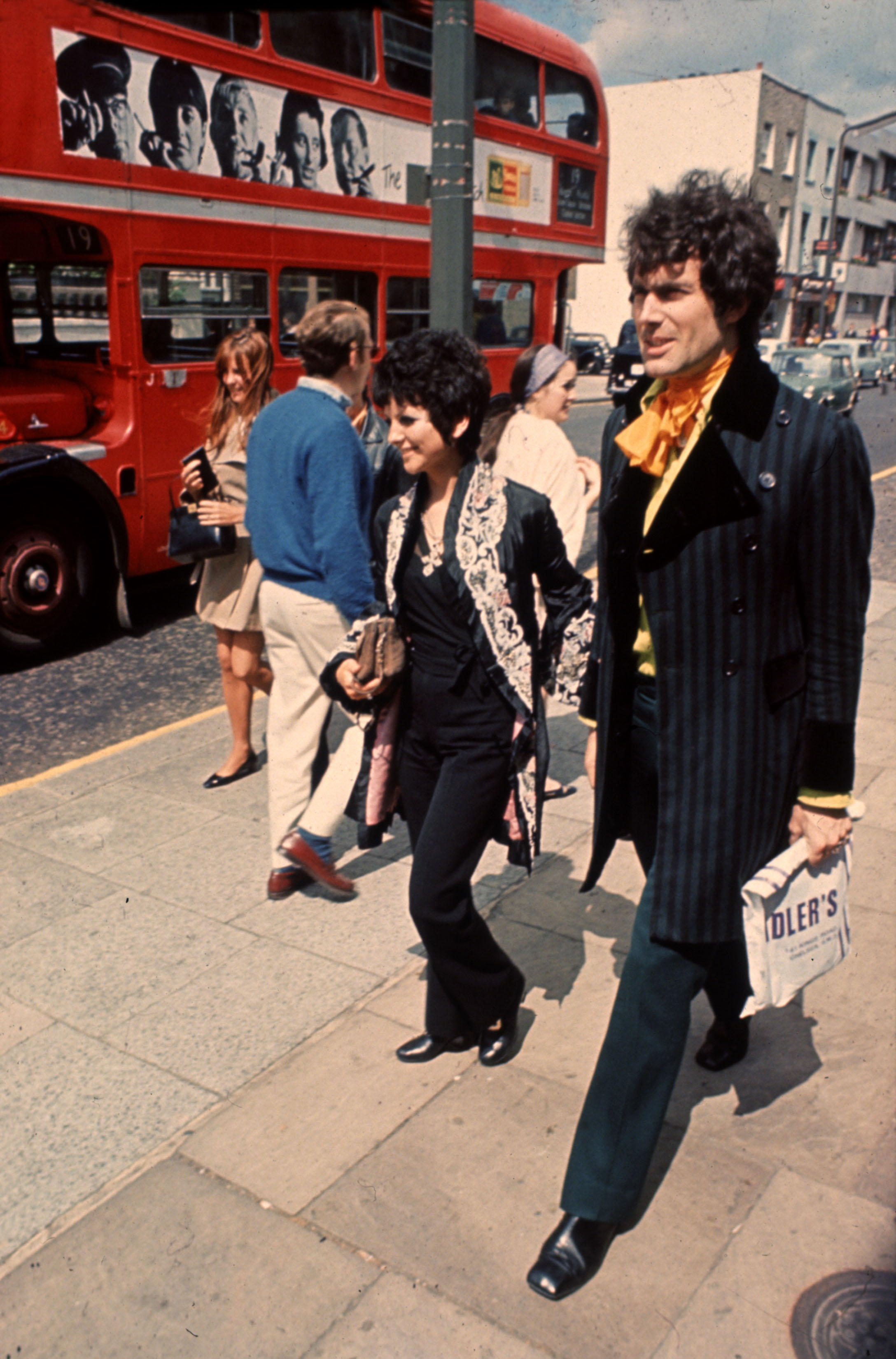
Zooey Quinn and I strutting our finery outside the Pheasantry, Kings Road in 1966.
Did Barbara Hulanicki’s fashion work influence the interiors for Big Biba? How did you keep the branding cohesive?
ST: "We were, by 1971, very used to Barbara and her insightful brilliance/genius. By a sort of long-term osmosis, we knew ‘Biba’. So, although we discussed and were initially thoroughly briefed by her on the Big Biba project, as time went on and the pressures on her (and us) rose, we were trusted to just get on with it. But we spent many mainly enjoyable late-night client meetings going through all of our recent working drawings (over 1500 of them) to get sign-off with Barbara and Fitz-Simon.
Always fun to show her something unexpected that we knew would make her laugh or just admire. As we worked long, hard hours (seven days a week for 21 months, 16 hours a day), she worked harder. She was extraordinary. Her stamina, her clarity and her foresight were staggering. But we influenced her too, as seen in her later life in Miami, designing interiors for Chris Blackwell."
.jpg)
Eleanor Powell & I at the launch Tea Dance of Biba Cosmetics in 1971 (clothes enforced upon me by Barbara Hulanicki!)
Do you have a favourite room or feature you designed for Big Biba?
ST: "Easy! I’ve always loved Pop Art from art school days, although I was a large-scale colourist, non-figurative painter. Tim and I divided up Big Biba between us. I designed the basement Food Hall, and was given by way of brief by Fitz, a scrap of paper with "Meat 35%, Cheese 10%, Fish 6%" etc – the relative sales of various foods. That was it. So I just got on with it and decided that I should put Warhol back into the supermarket. The first area I designed was canned goods. A ten-foot tall Heinz Bean Can, Warhol’s condensed soup, a giant sardine can, tinned ham and Whitmore’s Frankfurters and Thomas’s Baked Beans.
The rest just naturally followed. A fun-packed place to buy food, with a giant bread bin and ice-filled trawler, with attendant seagull cries, waves lapping and creaking timbers for fresh fish. A 12th-century Normandy farmyard for Dairy, with chiller with pressure pad (lift a particular yoghurt pot and the cows mooed!). A huge replica of Othello (Barbara’s much-feared Great Dane) selling dog food in his tummy. Just silly fun. I loved it and food shopping was (and still is) very dull. I have to give Barbara and Fitz-Simon great credit. Having never seen or known about my scheme, they took it very well and dissolved into laughter during the presentation. They signed it off immediately."
What stands out as your most “rock and roll” experience as a designer during the 1970s?
ST: "Having grafted so hard on the 21-month Big Biba project, we were keen to do something very different, but all we were offered was more ‘Biba’ type jobs for German and Japanese companies. So we did very little for a while, worked mainly in France for Danone, Nicola Wines and Kronenbourg, and Biba on follow-up projects.
One day the phone rang and upon answering it, Joanne, one of the studio assistants collapsed on the floor. So I retrieved the phone and asked who was calling – "Paul McCartney" – me; "Don’t f*** about, who is it?" – PM; "It’s PAUL McCARTNEY!!!" – me; "OK, so what’s the second line to Yesterday?" – PM sings; "and all my troubles seem so far away…" – me; "Oh, jeeeez! sorry!"
Despite that introduction, we then worked with Paul and Linda for about seven years, designing his MPL offices in Soho Square, his houses in Rye and Scotland, along with the recording studio for the Mull of Kintyre – from derelict cow shed with no services or roof, a mile from nowhere in the middle of the Lowlands of Scotland, to a fully functioning studio, with gallery for the string section, soundproofing and the adjacent control room, all in four weeks. That murderous project will always stand out for me. I hate the song, but he dedicated the B-side to me, which is a rocker!"
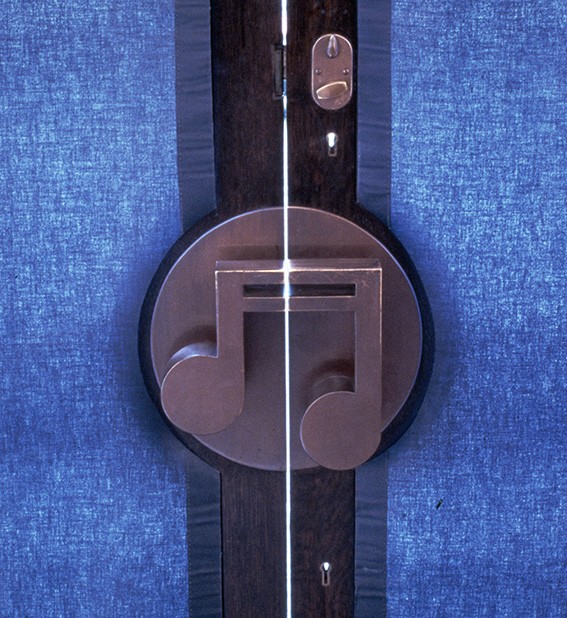
The bronze internal front door handles to the MLP offices in Soho Square - I tell everyone that they are the opening notes to Yesterday, but I dunno! NB; the cut-around blinds!
Could you highlight a few of your favourite lots from the upcoming auction and tell us what you love about them?
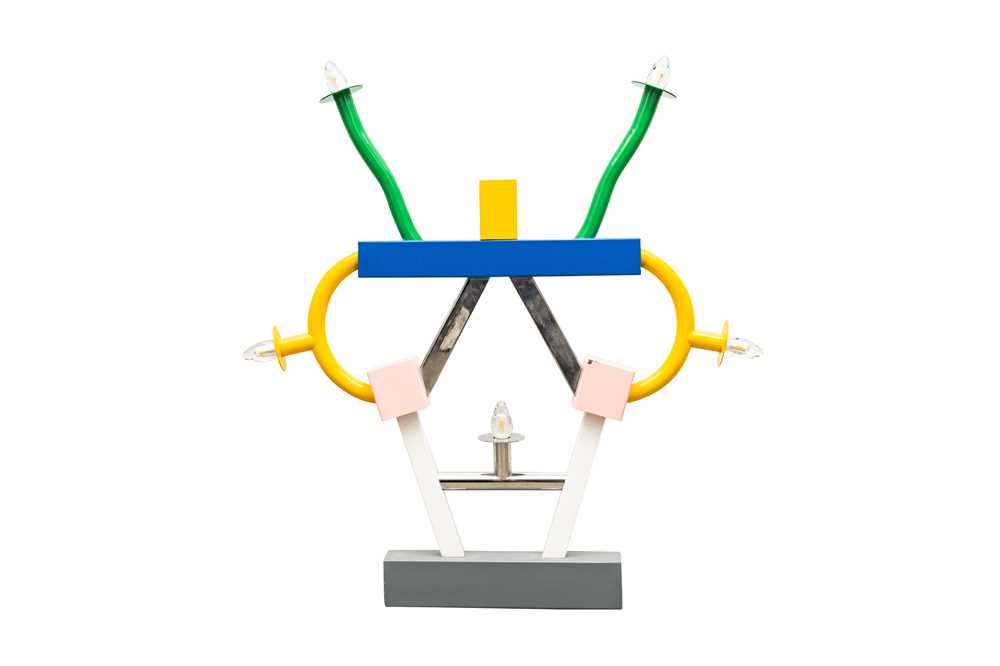
Ettore Sottsass (Italian 1917-2007) for Memphis, Italy, Estimate £1,200 -£1,800
ST: "I love the work of other designers who create things that would never in a billion years occur to me. Particularly Sottsass. He makes me smile – and admire – his sense of fun, of confident lunacy, his bravery and ultimately his supreme design skill. Because underneath all of that flippancy is a classically trained brain. He is a brilliant and inventive creator. Love it. No idea if it’s a great lamp, but I’d put up with that!"
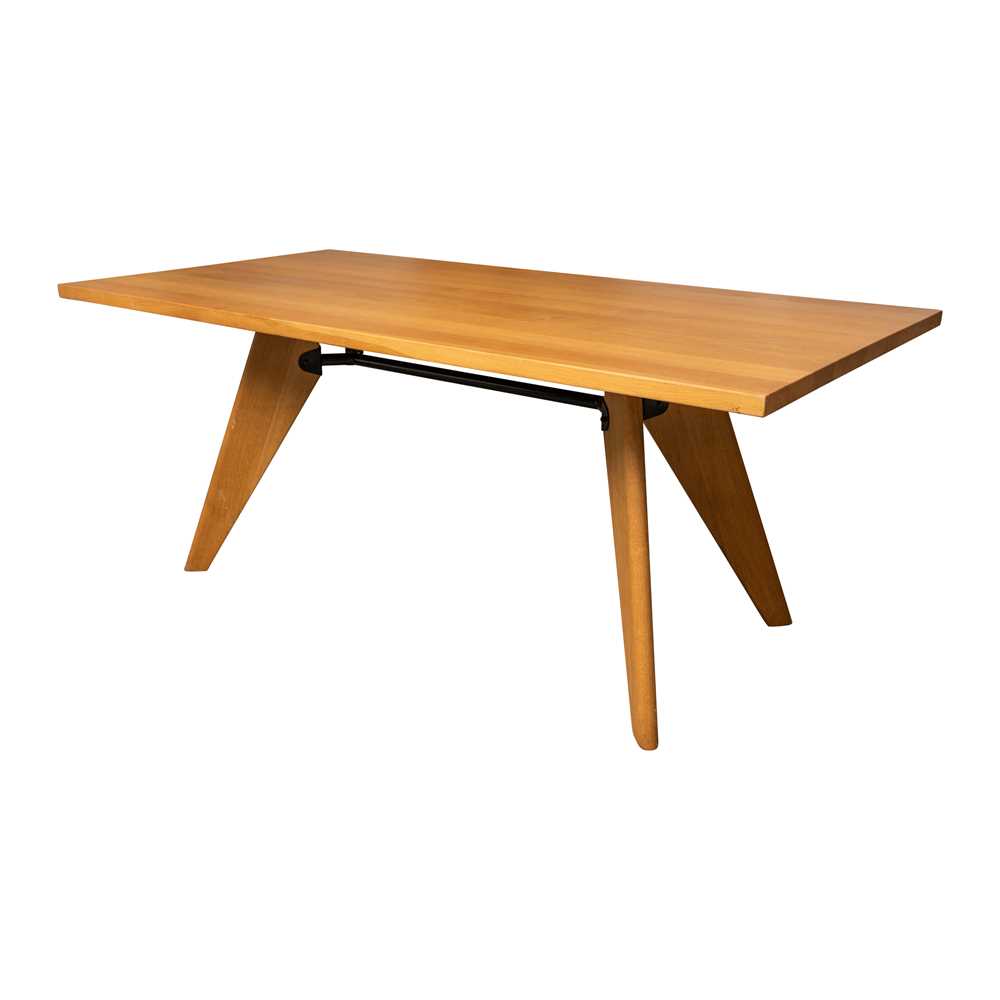 Jean Prouvé (French 1901-1984) for Vitra, Switzerland, Estimate £1,500 - £2,500
Jean Prouvé (French 1901-1984) for Vitra, Switzerland, Estimate £1,500 - £2,500
ST: "For the sublime to the very carefully considered. All my design life, I’ve admired Prouvé, ever since I saw his glass house conversion in Paris many trillion years ago. An austere French designer, but so clever. Nothing wasted. Everything so exact, yet poetic. If I hadn’t just sold my table of 240cm long, as it won’t comfortably fit my new house, I’d buy this monster. And for the money, an absolute bargain."
The archive of design work for Biba by Whitmore-Thomas from 1968, alongside the comprehensive archive of work produced by Whitmore-Thomas Design Associates including designs for the McCartney Soho Square offices and Spam Lite, can be found in the Victoria and Albert Museum’s archive of Art and Design now located at V&A Storehouse.
Explore the Sale
Our Design auction takes place on Tuesday 5 August at 11am, featuring standout pieces by Steve Thomas, Ettore Sottsass, Jean Prouvé and many others.
View the full auction catalogue here to browse all 372 lots.
Thinking of selling? We’re currently accepting consignments for future Design & Contemporary sales.
Contact our specialists today Design and Contemporary department, or submit an Online Valuation, for your complimentary valuation.